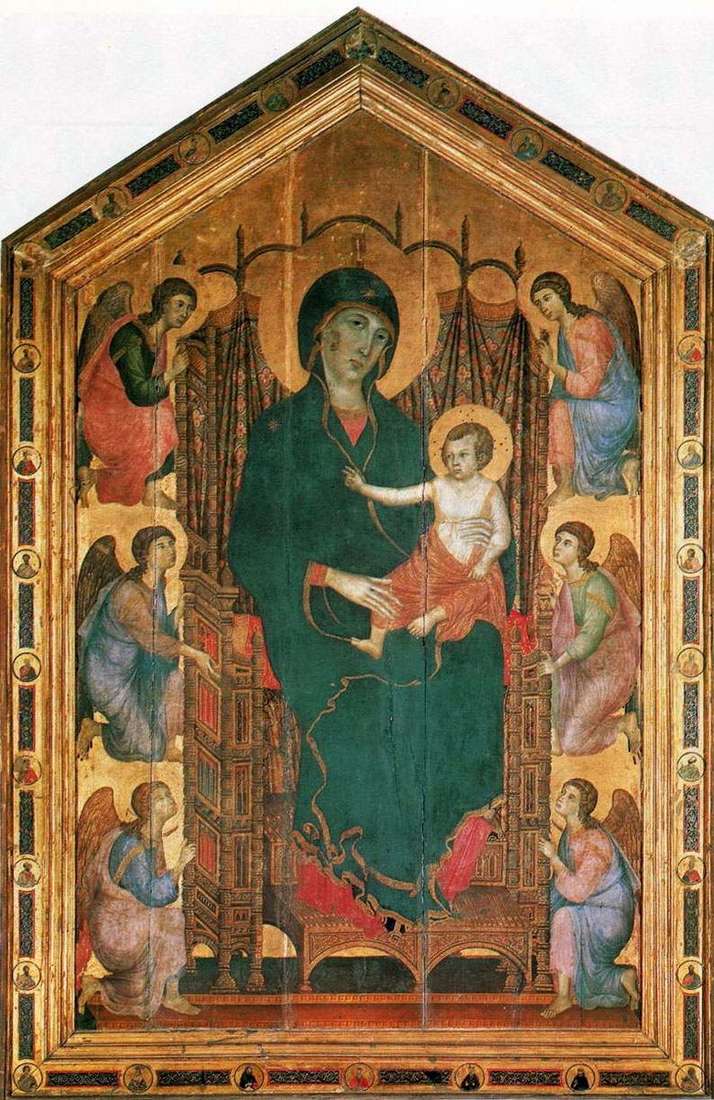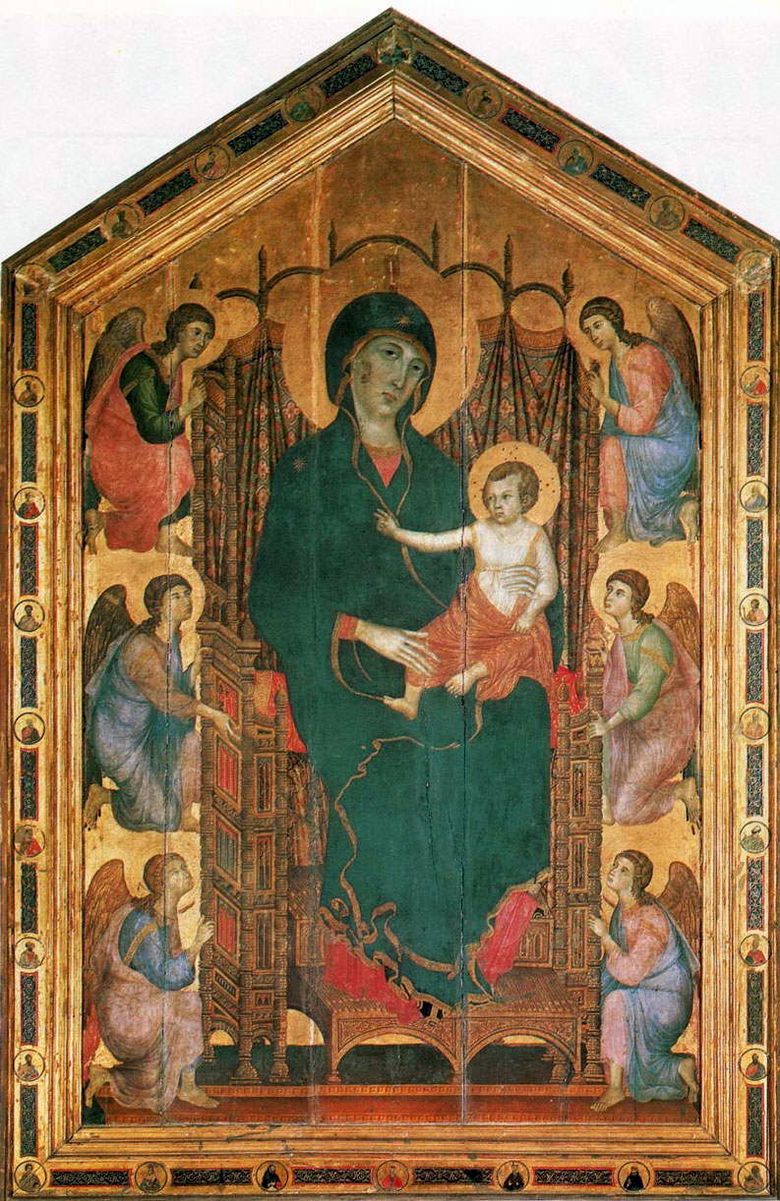
On April 15, 1285, the community of Maria of the Florentine church Santa Maria Novella commissioned Duchto to write a great image of the Madonna for their chapel. In the XVI century. this picture was moved to another chapel of this church, to the chapel of Rucellai, hence the name of the picture. This form of the altar image with a triangular pediment was common in Italian painting of the 13th century.
A wide painted frame, decorated with half-figurative images of Jesus, twenty-four prophets and Dominican saints, including the martyr Peter and the founder of the community, is rarely found among the surviving monuments of that era. Almost the whole space of the picture is filled with the disembodied figure of Madonna, dressed in a richly carved wooden throne, clad in a blue-green cloak. On her knees she is holding a baby in white and gold robes. The throne of the Queen of Heaven is reverenced with devotion to the kneeling angels, three on each side.
A detailed, three-dimensional image of the throne emphasizes the plausibility of the scene. The image of the throne, shown slightly from the side, follows the traditions of the older masters, it can be compared with the easel painting of Guido da Siena and the Assamese fresco of Maeste “Cimabue.” However, the direct lyric image of Madonna and the air figures of angels are alien to the plastic figures of Cimabue, they find further the development of rather the aspirations of the modern Siena school in the spirit of French Gothic. The light decorative play of lines in the picture of Duccio, the picturesqueness of the radiantly shining, warm colors – new phenomena in Italy painting.
 Madonna Rucellai – Duccio di Buoninsegna
Madonna Rucellai – Duccio di Buoninsegna Madonna with angels and saints (Maesta) by Duccio di Buoninsegna
Madonna with angels and saints (Maesta) by Duccio di Buoninsegna Madonna Rucellai – Duccio di Buoninsenia
Madonna Rucellai – Duccio di Buoninsenia Washing feet by Duccio di Buoninsegna
Washing feet by Duccio di Buoninsegna Maesta. Annunciation by Duccio di Buoninsegna
Maesta. Annunciation by Duccio di Buoninsegna Lavado de pies – Duccio di Buoninsegna
Lavado de pies – Duccio di Buoninsegna Myrrh-bearers at the grave of the Lord by Duccio di Buoninsegna
Myrrh-bearers at the grave of the Lord by Duccio di Buoninsegna Maesta. The Healing of the Blind by Duccio di Buoninsegna
Maesta. The Healing of the Blind by Duccio di Buoninsegna